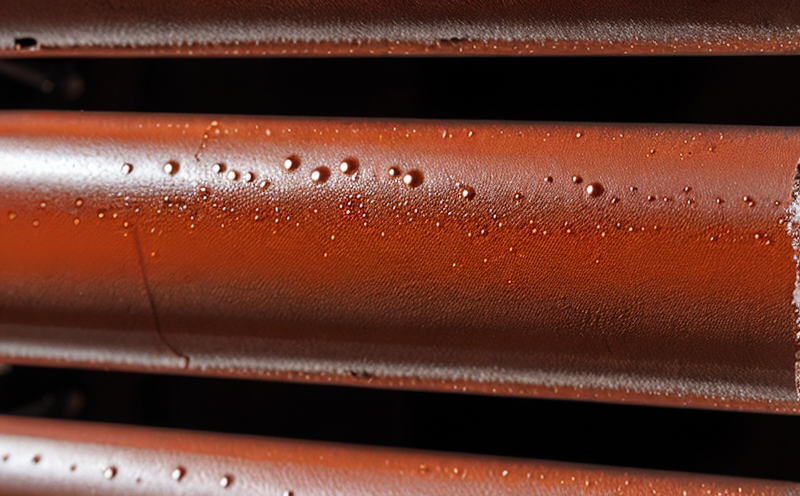Analysis of microstructure for corrosion studies
Unlocking the Secrets of Material Degradation Analysis of Microstructure for Corrosion Studies with Eurolab
As businesses continue to innovate and push the boundaries of technological advancement, the importance of ensuring the longevity and reliability of materials cannot be overstated. In todays fast-paced and competitive landscape, companies must prioritize quality control measures to prevent costly downtime, material wastage, and damage to reputation. One critical aspect of material evaluation is corrosion analysis, which plays a vital role in assessing an objects durability and performance under various environmental conditions. In this article, we will delve into the significance of microstructure analysis for corrosion studies and explore how Eurolab can provide you with expert guidance and services.
What is Analysis of Microstructure for Corrosion Studies?
Corrosion analysis involves examining the chemical and physical properties of materials to determine their susceptibility to degradation. By analyzing a materials microstructure, scientists can gain valuable insights into its composition, texture, and phase distribution all critical factors that influence an objects corrosion resistance. This complex process requires specialized expertise, state-of-the-art equipment, and meticulous attention to detail.
In essence, analysis of microstructure for corrosion studies is a laboratory-based service designed to identify the underlying causes of material degradation. Our team at Eurolab utilizes advanced microscopy techniques, such as scanning electron microscopy (SEM), transmission electron microscopy (TEM), and energy-dispersive spectroscopy (EDS) to examine samples in minute detail.
Why is Analysis of Microstructure for Corrosion Studies Essential?
In todays industry-driven world, understanding the behavior of materials under various conditions is crucial. The importance of corrosion analysis cannot be overstated
Material Degradation Prevention Corrosion is a significant concern for industries such as construction, automotive, aerospace, and energy. By analyzing material microstructure, businesses can identify potential risks and take proactive measures to prevent damage.
Product Reliability Enhancement By optimizing material selection and application, companies can significantly improve the lifespan of their products, reducing maintenance costs and minimizing downtime.
Risk Mitigation Understanding corrosion mechanisms enables organizations to develop targeted strategies for mitigating risks associated with material degradation.
Key Benefits of Using Analysis of Microstructure for Corrosion Studies
Improved Material Selection Gain insights into a materials inherent properties, enabling informed decisions on selection and application.
Enhanced Product Performance By optimizing material composition and structure, businesses can enhance product reliability, reduce defects, and improve overall performance.
Compliance with Regulations Adhere to industry standards and regulatory requirements by demonstrating an understanding of corrosion mechanisms and mitigation strategies.
Cost Savings Reduce costs associated with maintenance, repair, and replacement of damaged materials by identifying potential issues early on.
Case Study Corrosion Analysis for a Leading Automotive Manufacturer
A major automotive manufacturer approached Eurolab seeking expert advice on optimizing material selection for their new vehicle model. Our team conducted an exhaustive analysis of the metal alloys microstructure using advanced microscopy techniques, revealing critical weaknesses that could compromise the vehicles structural integrity.
Based on our findings, the manufacturer was able to implement targeted improvements, including adjustments to the production process and substitution of certain materials with more corrosion-resistant alternatives. As a result, the company achieved significant reductions in maintenance costs and improved product reliability, solidifying its position as a leader in the industry.
Frequently Asked Questions (FAQs)
Q What types of materials can be analyzed using this service?
A Our team at Eurolab has extensive experience analyzing a wide range of materials, including metals, alloys, polymers, and ceramics.
Q How do I prepare my samples for analysis?
A Please contact our team to discuss specific sample preparation requirements. We provide expert guidance on handling and preparing samples to ensure accurate results.
Q What is the turnaround time for analysis reports?
A Our dedicated team strives to deliver high-quality reports within a short timeframe, typically ranging from 2-5 working days, depending on the complexity of the project.
Q Can I request customized analysis services tailored to my specific needs?
A Absolutely! At Eurolab, we understand that each business has unique requirements. We work closely with clients to develop bespoke analysis plans and provide expert support throughout the process.
Conclusion
Corrosion analysis is a critical component of ensuring material reliability and performance in various industries. By leveraging Analysis of Microstructure for Corrosion Studies, businesses can unlock significant benefits, including improved product performance, reduced maintenance costs, and enhanced regulatory compliance. At Eurolab, our team of experts is dedicated to providing high-quality laboratory services that empower clients with actionable insights into their materials behavior.
We invite you to discover the value of partnering with a trusted provider like Eurolab for your corrosion analysis needs. Together, we can unlock new opportunities for growth and innovation while ensuring the integrity of your products and reputation.




